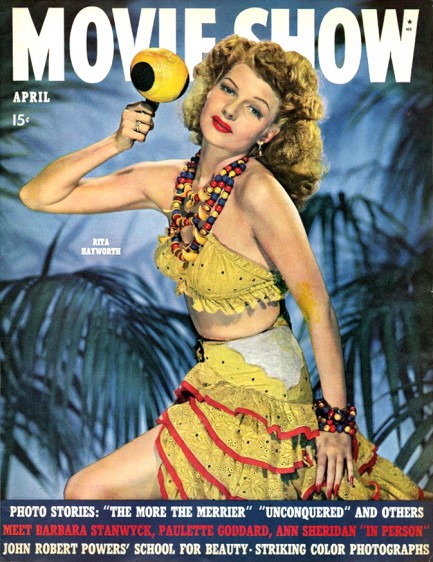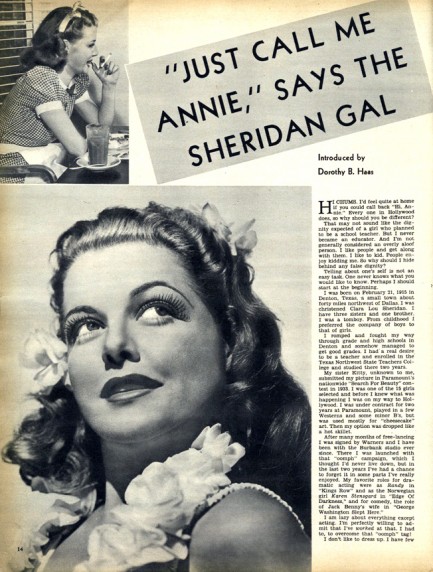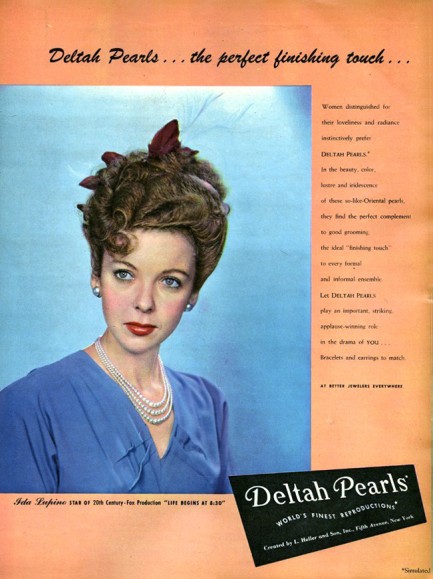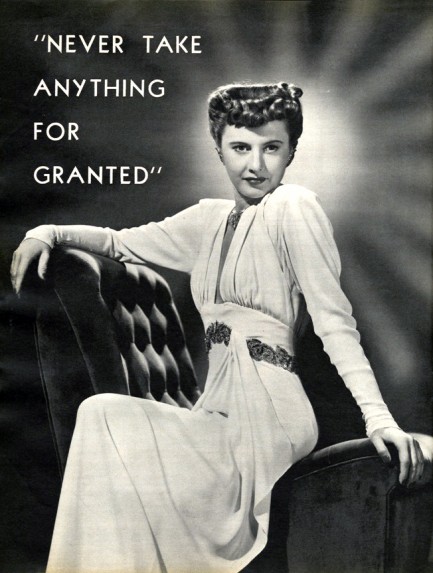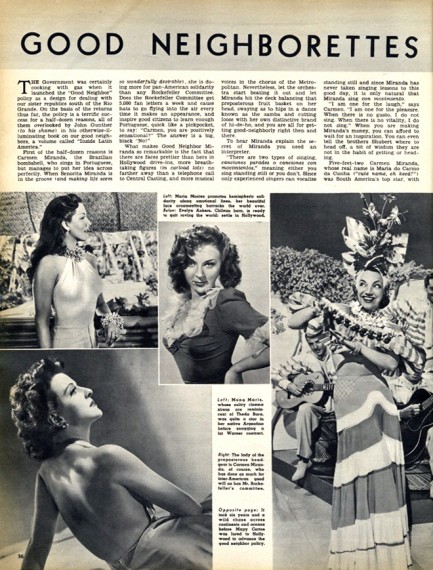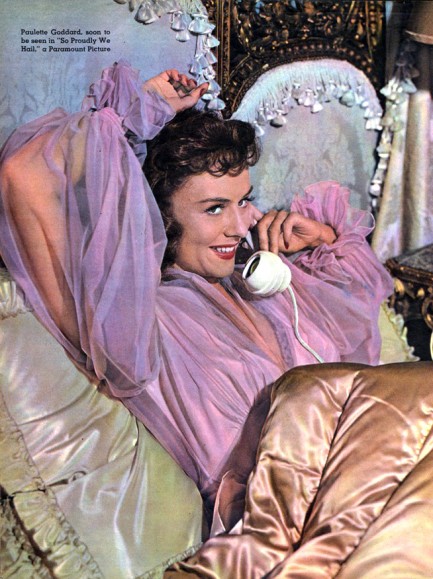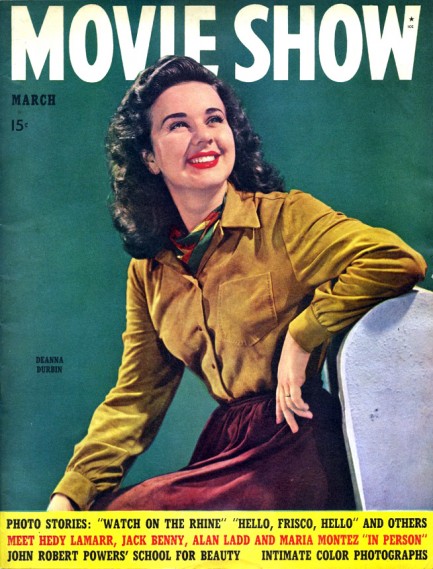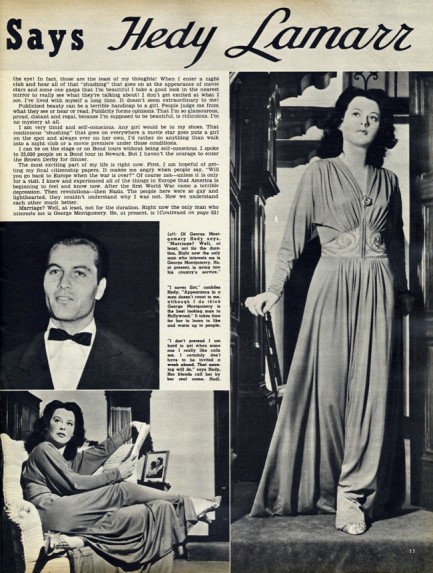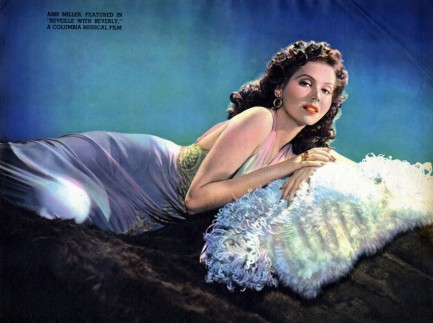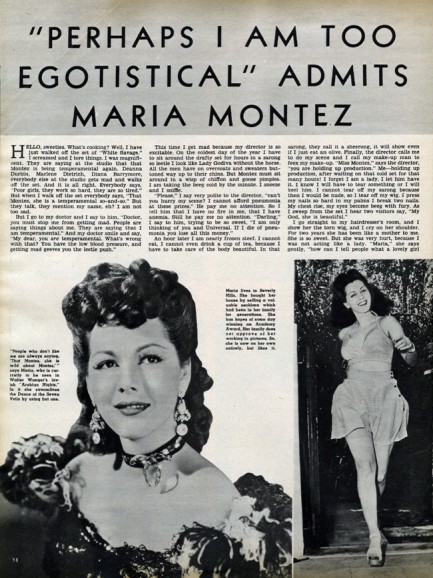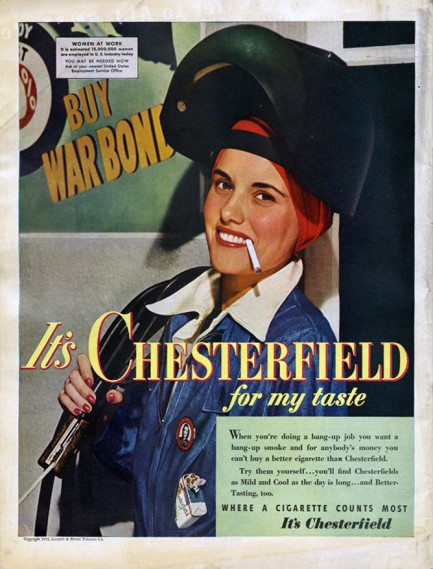 Fangs for your service. 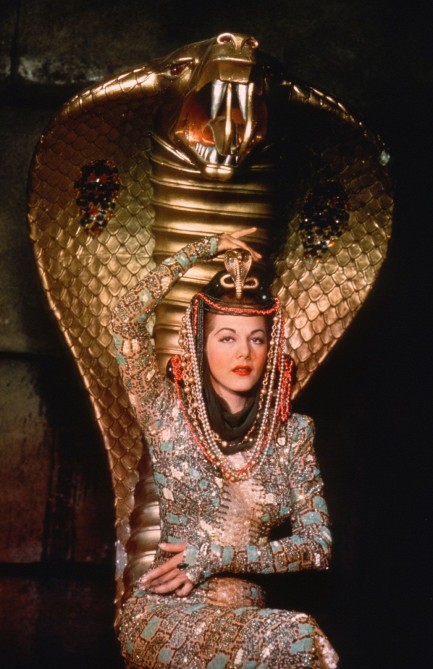
This promo image of Dominican actress Maria Montez in costume for her starring role in 1944's The Cobra Woman sells the movie for us. We'll definitely watch it—and hope it's better than the similarly named 1972 b-horror flick Night of the Cobra Woman. For that matter, we hope it's better than 1955's Cult of the Cobra. Our fingers are crossed. Montez was one of the top actresses in exotic escapist films, appearing in such fare as Ali Baba and the Forty Thieves, South of Tahiti, Moonlight in Hawaii, Sudan, Tangier, White Savage, Pirates of Monterrey, The Thief of Venice... you get the idea. She was still at the top of her globetrotting game when she was found dead in her bathtub in 1951 at age thirty-nine, but her legacy as a film star is assured—even if her movies were shot on Hollywood sound stages, she helped audiences travel the world.
 When civilized men want anything, the uncivilized answer should always be no. 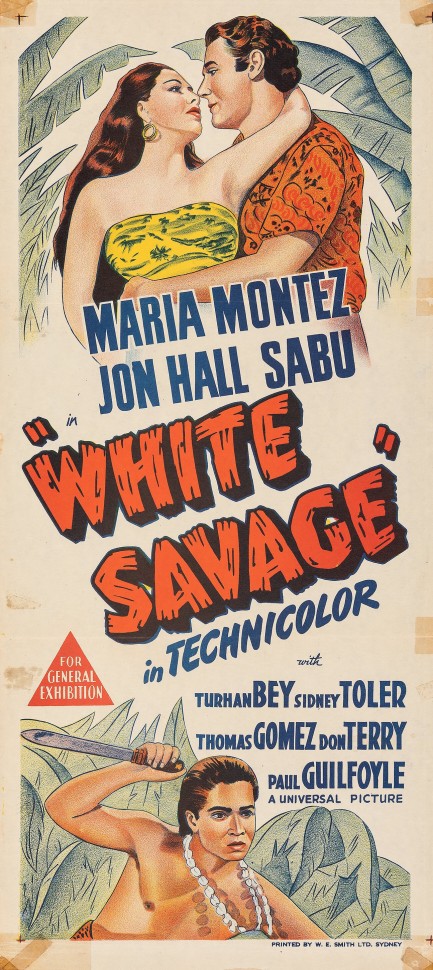
We knew we were in trouble about three minutes into White Savage, a movie that quickly revealed itself to be a bad hybrid of South Seas adventure and light romance. It features Dominican actress Maria Montez as the ruler of a Polynesian paradise called Temple Island that is coveted by two men. Good guy John Hall wants fishing rights to hunt sharks, while bad guy Thomas Gomez wants to steal the island's legendary treasure, which resides on the bottom of a sacred pool. Montez isn't keen on giving either man access, but she may not have a choice—she's liable to be betrayed by her brother, who's deeply in debt and willing to sell off their father's ancient land.
The movie features stalky, presumptuous male attitudes toward Montez, casts numerous bit players and extras in shoe polish, and features as an important character Charlie Chan portayer Sidney Toler in full inscrutable Asian mode, dispensing aphorisms for every occasion. In addition to these dubious aspects, almost the entire first half of the movie unspools to a highly annoying soundtrack of trilling flutes that are supposed to sound vaguely islandish. Don't get us wrong—we understand that the movie is meant to be largely lighthearted, but you know how to get future viewers to overlook flaws? Be a good movie. Excellence will buy a lot of forbearance. There's not much excellence in White Savage.
Are there any positives? Several. Montez is lovely. There's a tense, high stakes poker sequence that's a cut above average and shows that—similar to that old line from cowboy movies—white man not only speaks with forked tongue, but also plays with forked deck. Also positive, there's an outdoor island dance featuring some incredibly fit bodies of both sexes—we're talking co-ed six packs as far as the eye can see. And finally, because the movie is relentlessly dumb, if you're in the right frame of mind it can be funny. Otherwise, White Savage is just a throwaway wartime adventure set in the exotic Pacific islands, filmed in Los Angeles and environs, that takes viewers nowhere. It premiered in the U.S. today in 1943.
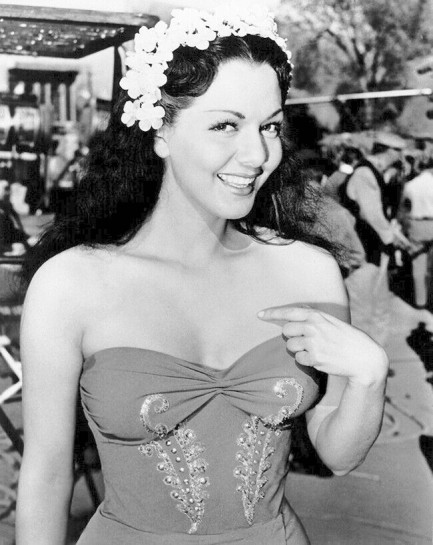 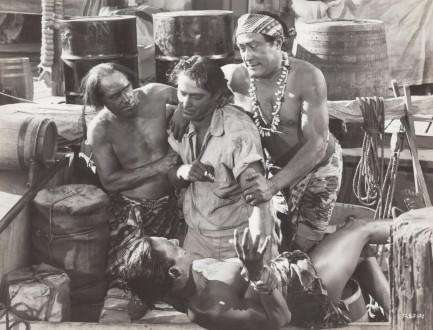 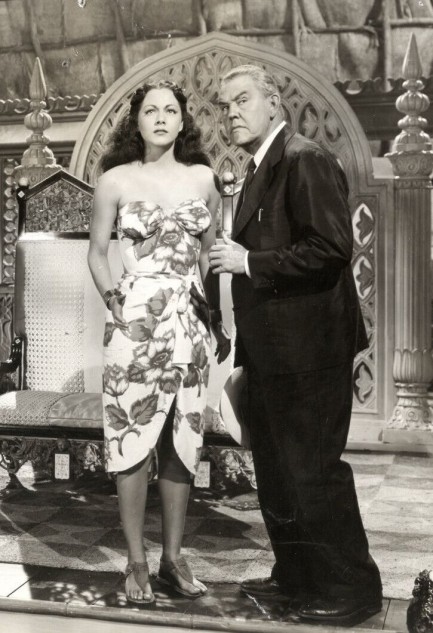 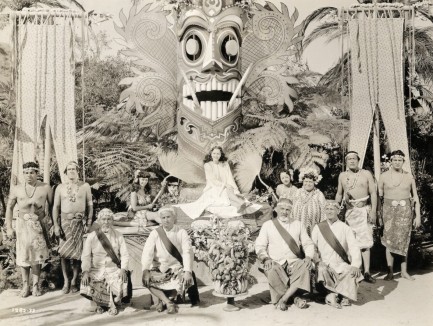 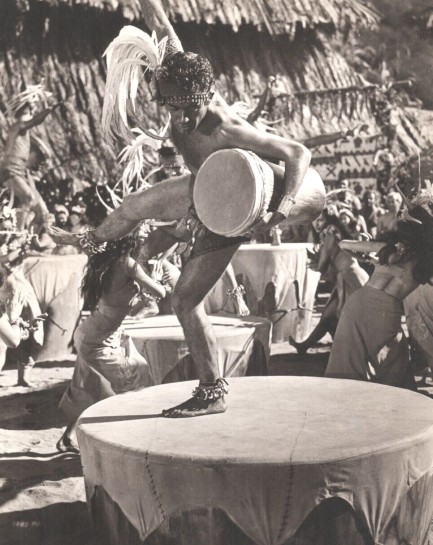 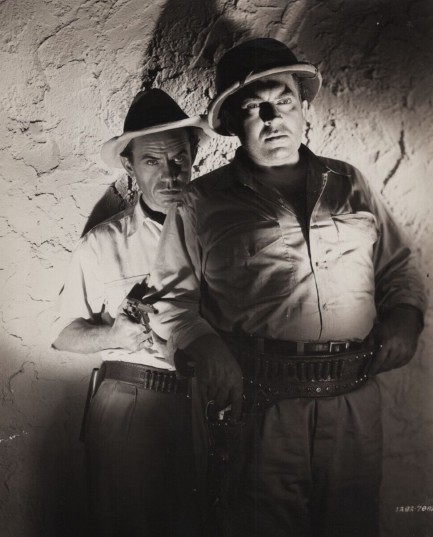 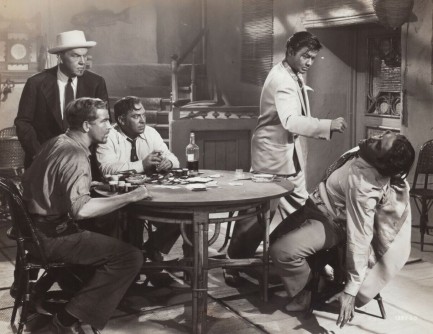 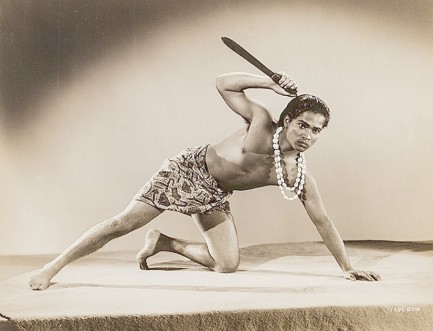 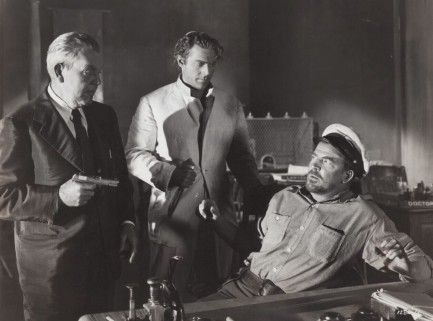 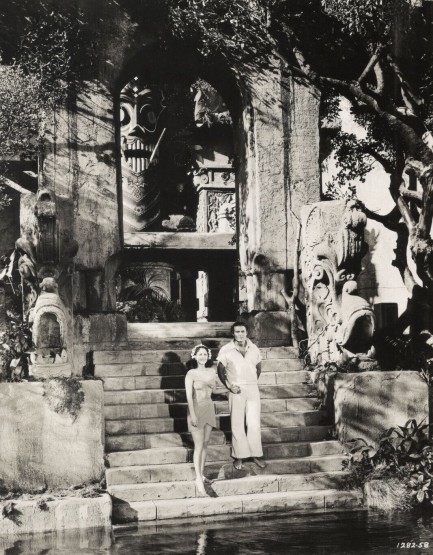 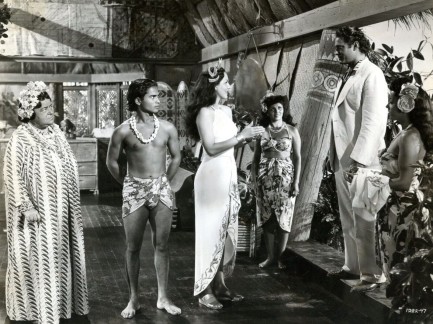  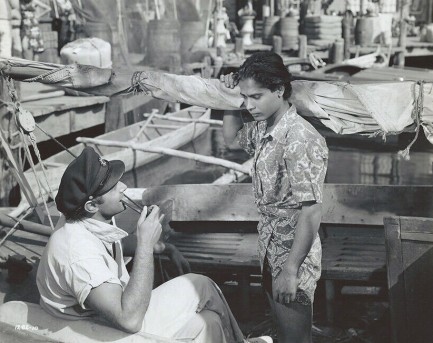  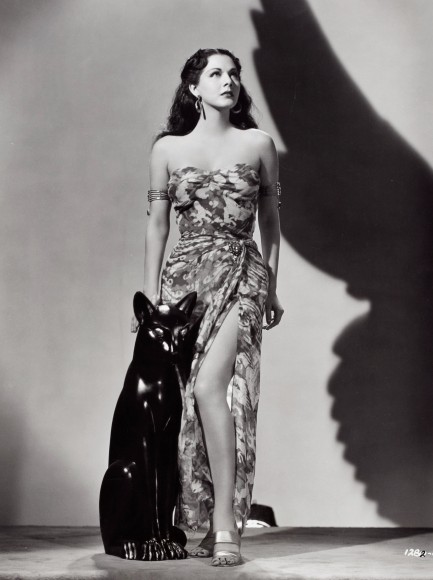 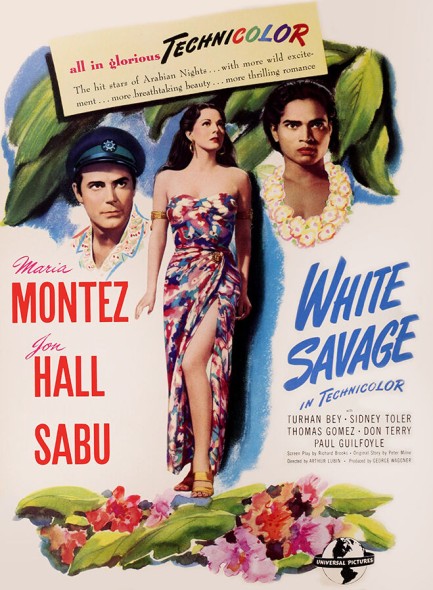 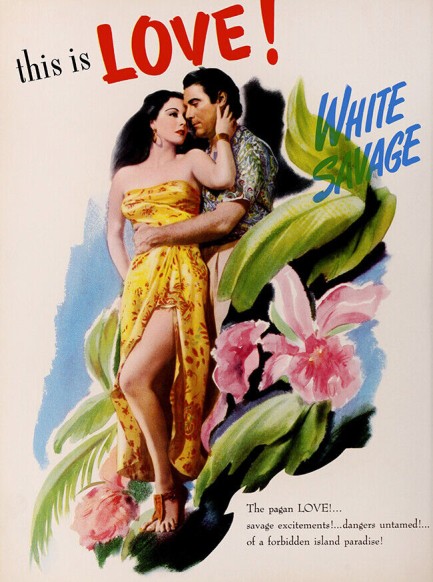 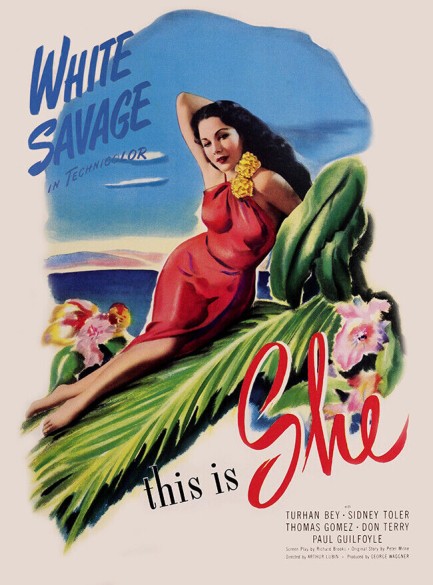
 In a field full of wildflowers she's the wildest of all. 
Exotic Tina Aumont, whose father was French actor Jean-Pierre Aumont and mother was Dominican actress Maria Montez, built an appropriately international film career mainly in Italy and France. But surprisingly she was American. In fact, she was born in Hollywood. Some of her films include Salon Kitty, La principessa nuda, aka The Nude Princess, and Satyricon—the Gian Luigi Polidoro one, not the Fellini one. Though she did later star in Fellini's Casanova in 1976. The photo above is from 1975 and first appeared in Italian Playboy.
 Hollywood is seen without its face on. 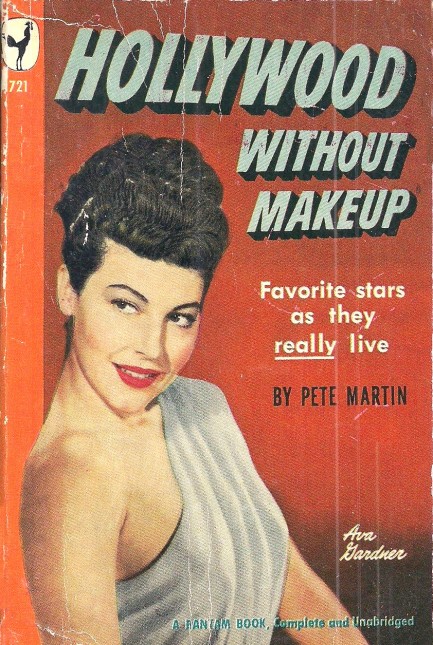
We have something a bit different today, a cover of Pete Martin's tinseltown tell-all Hollywood without Makeup. What you get here are tabloid style bios of various cinematic luminaries, including Greer Garson, Ava Gardner, and Maria Montez. The info on the stars probably makes this one worthwhile by itself, but as a bonus you get tabloid style writing in long form. It's a type of prose that isn't practiced anymore, but it can be quite entertaining to read. Here's an example:
“When first stumbled upon, the conception of the lady sounds as if those who are promoting it are deliberately plying a fire extinguisher to quench the flames of publicity that might singe her career.”
We don't even fully understand what that means, really. Here's a more straightforward passage:
“She operates on the theory that standing up on her two eye-filling legs and yelling for her rights, while at the same time clubbing people over the head with her overpowering personality, will bring home a choice brand of bacon generously streaked with lean. The head screwed on her decorative shoulders is not stuffed with goofer feathers or idle girlish vaporings. The mind behind her velvet-textured Latin facade closes on an opportunity like the jaws of a bear trap.”
Aside from being incredibly condescending, it's an interesting style. You find this type of baroque writing in all the high budget tabloids, such as Confidential, Hush-Hush, and Whisper. It's self-indulgent, but fun to read. Does it sound like your cup of tea? Then go for it. Regarding the cover art, we aren't sure whether we're dealing with a painting or a photo-illustration, but in either case it's uncredited.
|
 |

The headlines that mattered yesteryear.
2003—Hope Dies
Film legend Bob Hope dies of pneumonia two months after celebrating his 100th birthday. 1945—Churchill Given the Sack
In spite of admiring Winston Churchill as a great wartime leader, Britons elect
Clement Attlee the nation's new prime minister in a sweeping victory for the Labour Party over the Conservatives. 1952—Evita Peron Dies
Eva Duarte de Peron, aka Evita, wife of the president of the Argentine Republic, dies from cancer at age 33. Evita had brought the working classes into a position of political power never witnessed before, but was hated by the nation's powerful military class. She is lain to rest in Milan, Italy in a secret grave under a nun's name, but is eventually returned to Argentina for reburial beside her husband in 1974. 1943—Mussolini Calls It Quits
Italian dictator Benito Mussolini steps down as head of the armed forces and the government. It soon becomes clear that Il Duce did not relinquish power voluntarily, but was forced to resign after former Fascist colleagues turned against him. He is later installed by Germany as leader of the Italian Social Republic in the north of the country, but is killed by partisans in 1945.
|

|
|

It's easy. We have an uploader that makes it a snap. Use it to submit your art, text, header, and subhead. Your post can be funny, serious, or anything in between, as long as it's vintage pulp. You'll get a byline and experience the fleeting pride of free authorship. We'll edit your post for typos, but the rest is up to you. Click here to give us your best shot.

|
|



























